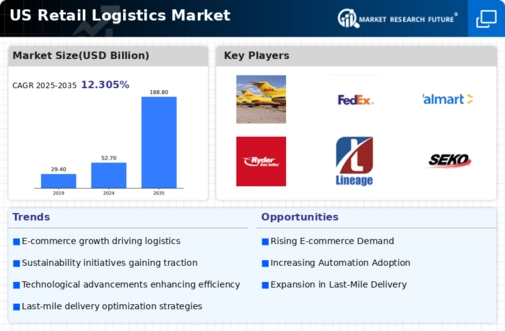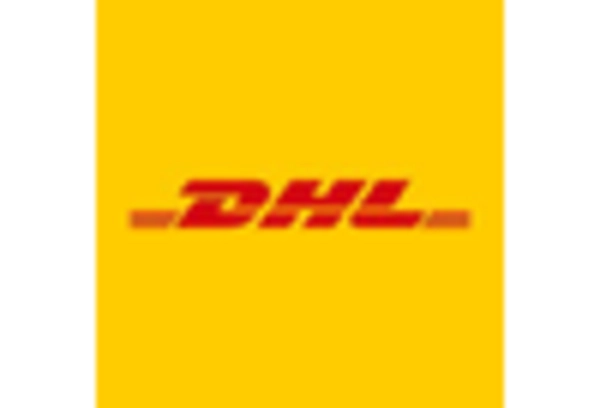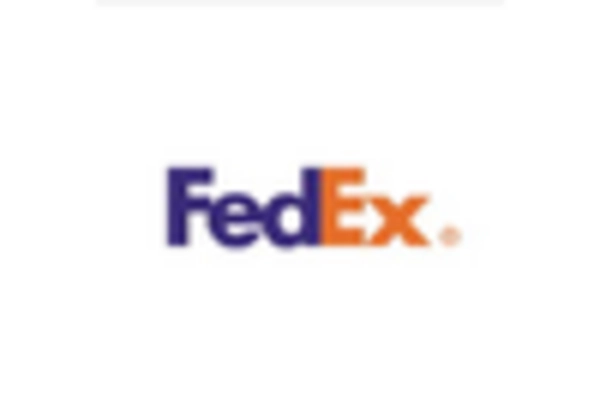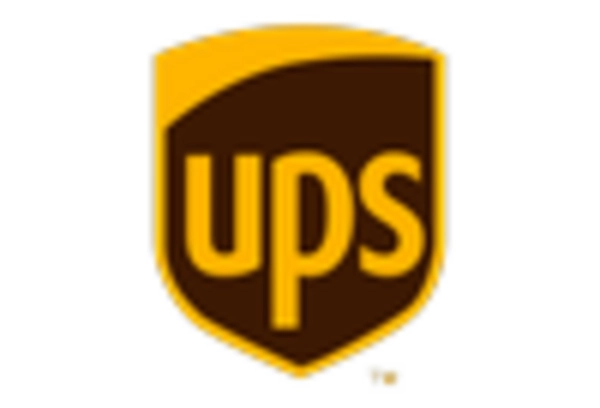The retail logistics market in the US is characterized by intense competition and rapid evolution, driven by technological advancements and changing consumer expectations. Major players such as Amazon (US), Walmart (US), and FedEx (US) are at the forefront, each adopting distinct strategies to enhance their operational capabilities. Amazon (US) continues to innovate its logistics network, focusing on automation and drone delivery systems to improve efficiency and reduce delivery times. Walmart (US), on the other hand, emphasizes its omnichannel strategy, integrating online and offline operations to provide seamless customer experiences. FedEx (US) is investing heavily in digital transformation, enhancing its tracking systems and expanding its last-mile delivery capabilities, which collectively shape a competitive landscape that is increasingly reliant on technology and customer-centric solutions.
Key business tactics within this market include supply chain optimization and localized manufacturing, which are essential for meeting the demands of a diverse consumer base. The competitive structure appears moderately fragmented, with several key players exerting significant influence. This fragmentation allows for a variety of service offerings, yet the dominance of major companies like Amazon (US) and Walmart (US) creates a challenging environment for smaller firms. The collective strategies of these key players indicate a trend towards consolidation, as companies seek to enhance their market positions through strategic partnerships and technological investments.
In October 2025, Amazon (US) announced the expansion of its drone delivery service, aiming to cover 50% of urban areas by the end of the year. This strategic move is likely to enhance Amazon's competitive edge by significantly reducing delivery times and operational costs, thereby reinforcing its market leadership. The implications of this expansion suggest a shift in consumer expectations towards faster delivery options, compelling competitors to adapt their logistics strategies accordingly.
In September 2025, Walmart (US) unveiled a new initiative to enhance its supply chain sustainability by committing to a 30% reduction in greenhouse gas emissions across its logistics operations by 2030. This initiative not only aligns with growing consumer demand for environmentally responsible practices but also positions Walmart as a leader in sustainable logistics. The strategic importance of this commitment lies in its potential to attract eco-conscious consumers and improve operational efficiencies through sustainable practices.
In August 2025, FedEx (US) launched a new AI-driven analytics platform designed to optimize route planning and reduce fuel consumption. This technological advancement is indicative of the broader trend towards AI integration in logistics, which aims to enhance operational efficiency and reduce costs. The strategic importance of this platform lies in its ability to provide real-time data insights, enabling FedEx to respond swiftly to changing market conditions and customer needs.
As of November 2025, the retail logistics market is increasingly defined by trends such as digitalization, sustainability, and AI integration. Strategic alliances among key players are shaping the competitive landscape, fostering innovation and collaboration. The shift from price-based competition to a focus on technology, supply chain reliability, and customer experience is evident. Moving forward, competitive differentiation will likely hinge on the ability to leverage these trends, with companies that prioritize innovation and sustainability poised to lead the market.

















Leave a Comment